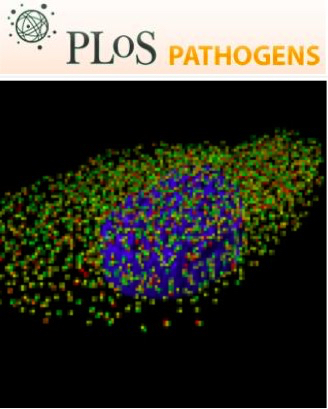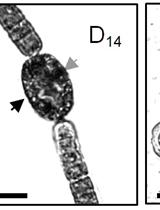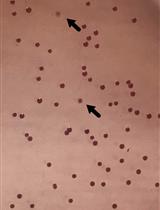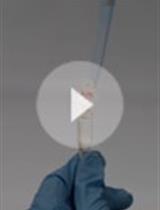- EN - English
- CN - 中文
Generation of Mammalian Host-adapted Leptospira interrogans by Cultivation in Peritoneal Dialysis Membrane Chamber Implantation in Rats
在大鼠中通过腹膜的透析膜腔体灌输培养生成哺乳类动物特异性的肾脏钩端螺旋体
发布: 2015年07月20日第5卷第14期 DOI: 10.21769/BioProtoc.1536 浏览次数: 9147
Abstract
Leptospira interrogans can infect a myriad of mammalian hosts, including humans (Bharti et al., 2003; Ko et al., 2009). Following acquisition by a suitable host, leptospires disseminate via the bloodstream to multiple tissues, including the kidneys, where they adhere to and colonize the proximal convoluted renal tubules (Athanazio et al., 2008). Infected hosts shed large number of spirochetes in their urine and the leptospires can survive in different environmental conditions before transmission to another host. Differential gene expression by Leptospira spp. permits adaption to these new conditions. Here we describe a protocol for the cultivation of Leptospira interrogans within Dialysis Membrane Chambers (DMCs) implanted into the peritoneal cavities of Sprague-Dawley rats (Caimano et al., 2014). This technique was originally developed to study mammalian adaption by the Lyme disease spirochete, Borrelia burgdorferi (Akins et al., 1998; Caimano, 2005). The small pore size (8,000 MWCO) of the dialysis membrane tubing used for this procedure permits access to host nutrients but excludes host antibodies and immune effector cells. Given the physiological and environmental similarities between DMCs and the proximal convoluted renal tubule, we reasoned that the DMC model would be suitable for studying in vivo gene expression by L. interrogans. In a 20 to 30 min procedure, DMCs containing virulent leptospires are surgically-implanted into the rat peritoneal cavity. Nine to 11 days post-implantation, DMCs are explanted and organisms recovered. Typically, a single DMC yields ~109 mammalian host-adapted leptospires (Caimano et al., 2014). In addition to providing a facile system for studying the transcriptional and physiologic changes pathogenic L. interrogans undergo within the mammal, the DMC model also provides a rationale basis for selecting new targets for mutagenesis and the identification of novel virulence determinants.
Caution: Leptospira interrogans is a BSL-2 level pathogen and known to be excreted in the urine of infected animals. Animals should be handled and disposed of using recommended Animal Biosafety Levels (ABSL) for infectious agents using vertebrate animal guidelines.
Note: All protocols using live animals must conform to governmental regulations regarding the care and use of laboratory animals. The success of this protocol is dependent on the proper use of aseptic techniques during all stages of both dialysis membrane chamber preparation and animal surgery.
Materials and Reagents
- Adult female Sprague-Dawley rats (175-200 g)
- EMJH medium (prepared as described in Supplementary data)
- Bovine serum albumin (BSA)
EMJH+BSA (10 mg/ml BSA, BSA concentration 20 mg/ml) (Millipore, catalog number: 810037 )
Note: The quality of the albumin used for the cultivation of leptospires is critical. Please verify that the albumin used for DMC implantation supports the growth of virulent leptospires under standard in vitro growth conditions. Other sources of BSA were tested (e.g., Millipore, catalog number: 840644 and Sigma-Aldrich, catalog number: A-9647 ) with similar results. - Leptospira interrogans, logarithmic phase, grown under standard in vitro conditions (28-30 °C) (Zuerner, 2005)
- Ultrapure water (deionized, distilled) (e.g., Milli-Q)
- 1 mM EDTA (pH 8.0)
- Regenerated cellulose dialysis membrane tubing (SpectrumTM Spectra/PorTM 1 RC, 6,000 to 8,000 MWCO, 32 mm width) (Spectrum Labs, catalog number: 132655 )
- Filter units (0.22 µm, 250 ml, sterile) (e.g., Millipore Stericup® filter unit)
- Ketamine/xylazine anesthetic cocktail (40-80 mg per kg/ 5-10 mg per kg, administered intramuscularly)
- Ophthalmic ointment (e.g., Puralube)
- Betadine® surgical scrub solution
- Carprofen (5-10 mg per kg, administered subcutaneously)
- Ethanol (70%)
- Ketamine/xylazine anesthetic cocktail (see Recipes)
- EMJH + BSA medium (see Recipes)
Equipment
- Surgical gloves (individually wrapped, sterile)
- Disposable serological pipets (10 ml sterile, individually-wrapped)
- Surgical drape (cut into 12 in (46 cm) squares, sterile)
- Gauze (4 x 4 in sterile)
- Microscope equipped with a dark field condenser (e.g., Olympus, model: BX40 )
- Three 2-L Pyrex beakers (each containing a magnetic stir bar)
- Hot plate with stirring option
- Extra-long blunt end forceps (sterile)
- Pipet filler (e.g., Drummond Scientific, model: Pipet-Aid )
- Surgical instrument pack, one per animal, sterilized prior to use and kept within sterile package:
Scalpel blades (No. 10)
Scalpel blade holder
Scissors, iris, 4 in (~10.2-cm)
Tissue forceps, 5 ½ in (~14 cm) (1x 2-tooth dissecting or Adson-Brown)
Tissue forceps, 5 ½ in (~14 cm) (blunt-end)
Needle holder forceps with built-in scissors (e.g., Olsen Hegar) (5 ½ in)
(~14 cm)
Suture, Ethicon 40, SH 1, 27 in (~68.6 cm) coated Vicryl, violet-braided suture
Autoclip® 9-mm stainless steel wound closure clips and applicator - Biological safety cabinet (Biosafety Level 2, model: BSL2 )
- Circulating warm-water blanket and pump
- Electric hair/fur clippers
- Glass bead sterilizer (e.g., Braintree Scientific, model: Germinator 500 ) (optional)
Procedure
文章信息
版权信息
© 2015 The Authors; exclusive licensee Bio-protocol LLC.
如何引用
Grassmann, A. A., McBride, A. J. A., Nally, J. E. and Caimano, M. J. (2015). Generation of Mammalian Host-adapted Leptospira interrogans by Cultivation in Peritoneal Dialysis Membrane Chamber Implantation in Rats. Bio-protocol 5(14): e1536. DOI: 10.21769/BioProtoc.1536.
分类
微生物学 > 微生物细胞生物学 > 细胞分离和培养
您对这篇实验方法有问题吗?
在此处发布您的问题,我们将邀请本文作者来回答。同时,我们会将您的问题发布到Bio-protocol Exchange,以便寻求社区成员的帮助。
Share
Bluesky
X
Copy link

















